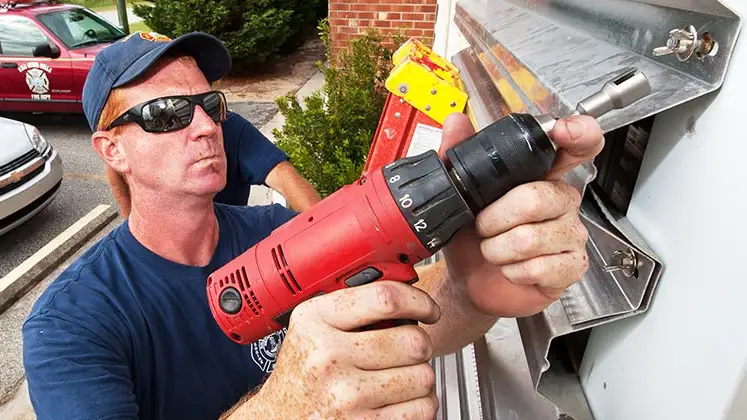How natural disasters damage homes
Natural disasters can cause extensive damage to homes in their path, including broken windows and water or structural damage. In 2022, according to the Insurance Information Institute (Triple-I), insured losses due to natural disasters totaled over $98 billion, up slightly from $93.3 billion in 2021. Here are some of the most common natural disasters and their estimated insured losses that have occurred in previous years:
- Severe convective storm (aka strong thunderstorm): In 2022, 62 major thunderstorms resulted in over $29.3 billion in insured losses.
- Earthquakes: In 2020, four earthquake events totaled $58 million in insured losses.
- Floods: In 2022, 15 flooding events totaled $3.3 billion in insured losses.
- Wildfires: There were 26 wildfires in 2022 that totaled $8.9 billion in insured losses.
- Hurricanes: In 2022, there were three recorded hurricanes or tropical storms that resulted in $53.2 billion in insured losses.
- Winter storms: There were 13 winter storms in 2022, which totaled $4.1 billion in insured losses.
Tips to prepare your home for a natural disaster
The best time to prepare for a disaster is before it happens. To protect a home from a natural disaster, being proactive is key. Building the home with wind-proof and fire-proof materials offers some of the best protection, but it is not essential. Some simple additional steps can be taken to keep a home safe before a natural disaster strikes.
Reinforce doors and windows
During a hurricane or tornado, doors can fly off and loose debris can break windows. Consider installing wind-resistant doors and windows or storm-proof shutters to keep them intact during a storm. For a temporary fix, board up windows and doors with plywood before a storm is expected to hit.
Find water, gas and electrical lines
When a storm is on the horizon, a homeowner might receive emergency instructions to turn off the home’s water, gas and electricity connections to prevent flooding and fire hazards. Water and power lines, if left unchecked, can cause additional damage, and as such, before a disaster happens, it’s important to know where those lines are located and how to shut them off. If there is an evacuation order, disconnect water, gas and electrical lines before leaving.
Use sandbags
Sandbags divert water, and placing them around doors or in flood-prone areas is an effective way to keep flood water from seeping into a home during a hurricane. This can be especially crucial during a storm surge. The sandbags should be stacked at least one foot high for adequate protection.
Secure outdoor furniture
If there is outdoor furniture on a porch or patio, make sure everything is tied down and secured before a storm hits. Loose items, like sporting equipment, grills or umbrellas should be moved inside, if possible. Double-check that toys, yard tools and other small items are not left outside before a storm. These items could easily cause additional damage to your property and possibly damage your neighbors property.
Prune large trees
Trees can cause major damage during a storm. Heavy branches that overhang the home’s roof can easily fall and cause significant problems, including injuries to people inside. To keep the roof safe, regularly prune large trees on the property and ask neighbors to keep any trees that cross property lines trimmed. If you are in a fire-prone area, consider leaving space between your house and any foliage that could potentially add fuel to a fire.
Secure heavy furniture to the walls
Earthquakes can be powerful enough to knock over heavy furniture, including appliances like a refrigerator. Items that fall can cause serious injuries, especially to young children. If the home is located in an earthquake zone, secure heavy furniture to the walls with a bracket and be sure nothing near them can be damaged if they fall.
Look for fire-retardant plants
In areas prone to wildfire, creating a defensible zone around your home and making use of non-flammable materials, like cement and stone, are just some strategies to protect your home. Plants in the yard can fuel the flames and spread the fire towards the house. Cal Fire recommends planting fire-retardant plants, like Rockrose, ice plant, aloe, hedging roses, sumac and shrub apples. Maple, poplar and cherry trees tend to be less flammable than pine or fir trees. A well-maintained lawn that does not have overgrown, dried out grass can also help mitigate your risk.
Create an emergency plan
Creating a natural disaster survival guide for the family is important. Some items to keep in an emergency kit can include non-perishable food items and bottled water, in case stores are not open and the water supply is impacted, as well as medications, chargers for cell phones, and radios for emergency alerts. Keep a physical document that includes evacuation routes, insurance policy information, local radio stations and a checklist for securing the home. Make sure to have a digital and hardcopy version in the event of a power loss. Most importantly, make sure every member of your household knows the emergency plan for each type of disaster and where the supplies are located. If applicable, determine a safe meet-up place or contact method for family members who may be outside of the house. Keep in mind that cell phones may not be available in the aftermath of a natural disaster.
What home insurance covers during natural disasters
In many cases, home insurance will cover natural disaster claims. Weather events that cause heavy winds, heavy rain, freezing, snow and ice, fire and lightning or falling objects are typically covered under homeowners insurance.
Home insurance will usually cover damage to the home’s exterior and personal belongings inside and outside the home. If it becomes necessary to move out temporarily while the home is being repaired, loss of use coverage will pay for hotel and food expenses.
Here are the natural disasters that are typically covered by home insurance:
- Thunderstorms
- Hurricanes
- Tornados
- Wildfires
- Blizzards
Several natural disasters are not covered by standard homeowners insurance policies, including flood or earthquake damage. Homeowners who live in areas where floods and earthquakes are common are encouraged to consider purchasing separate flood insurance and earthquake insurance policies. In some states, damages from hurricanes, particularly wind damage, might be covered, but there may be a hurricane or windstorm deductible that is separate from your normal damage deductible. In coastal towns or other areas prone to hurricane damage, this deductible is usually one to five percent of your home’s insured value.





